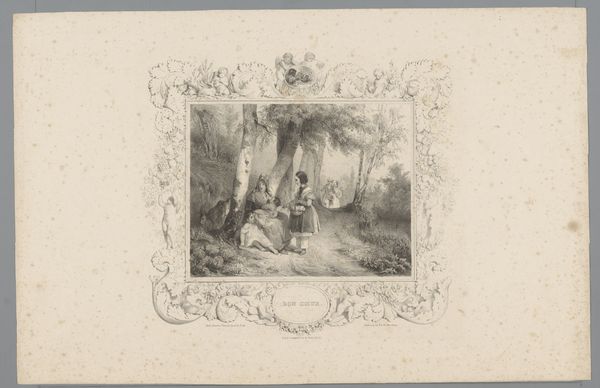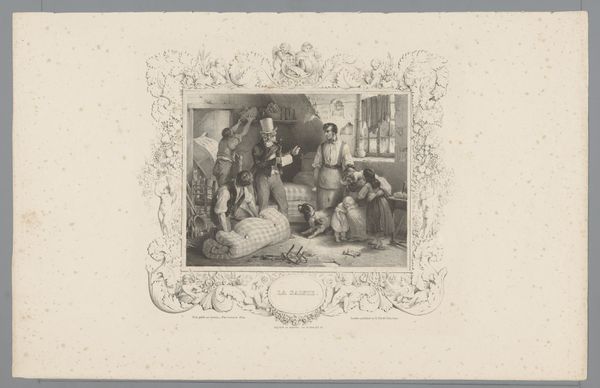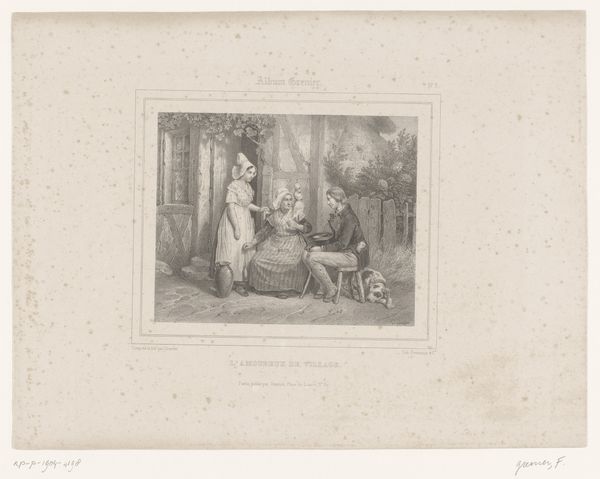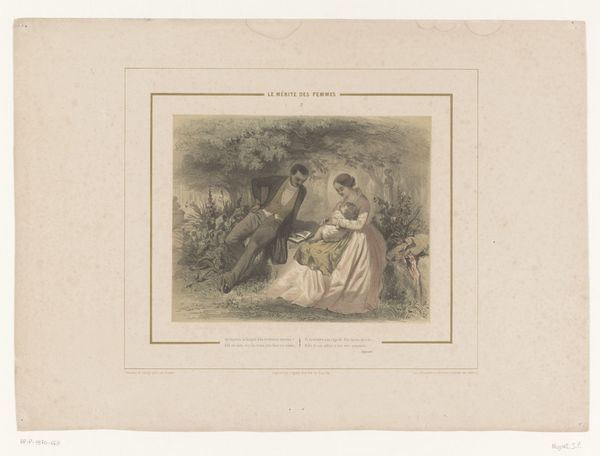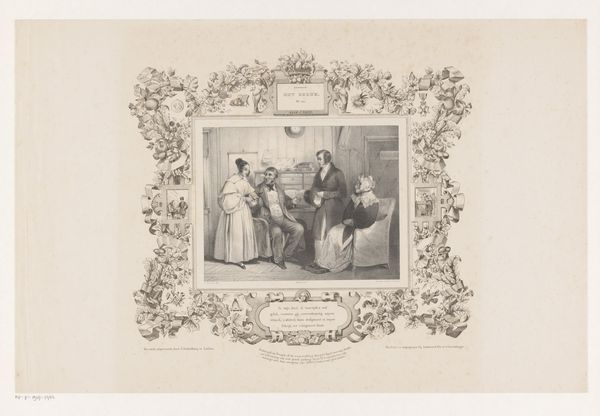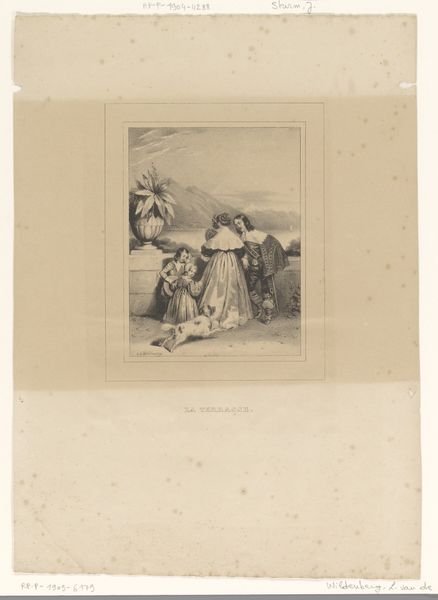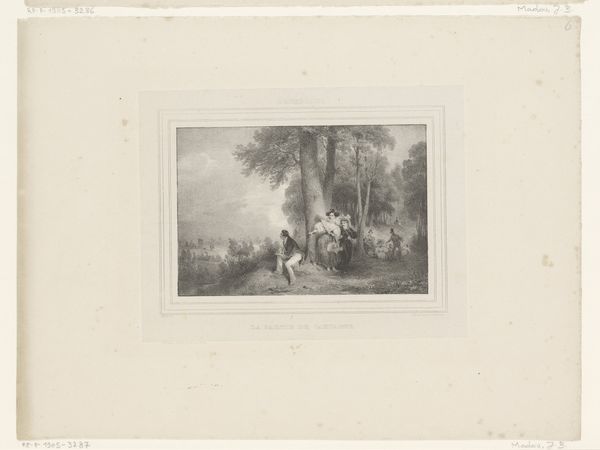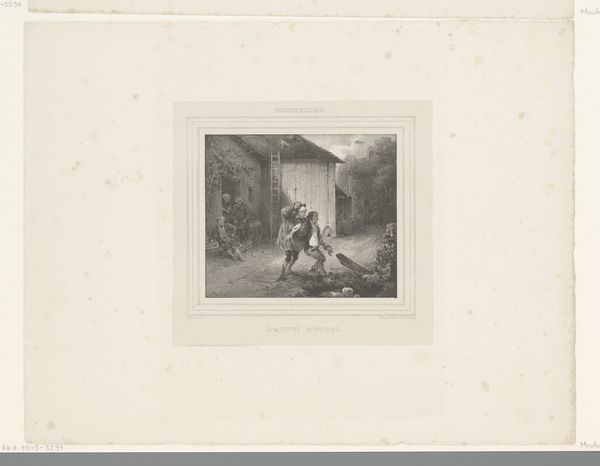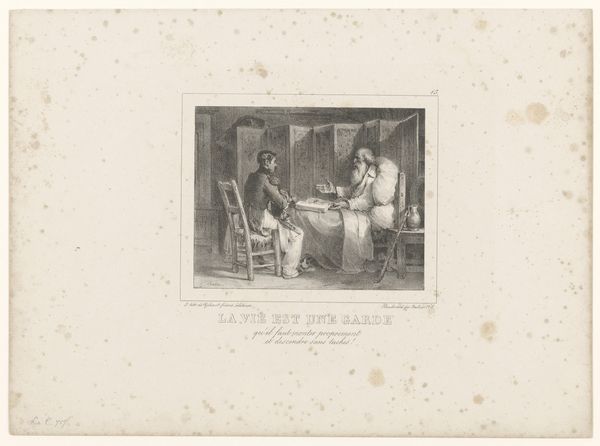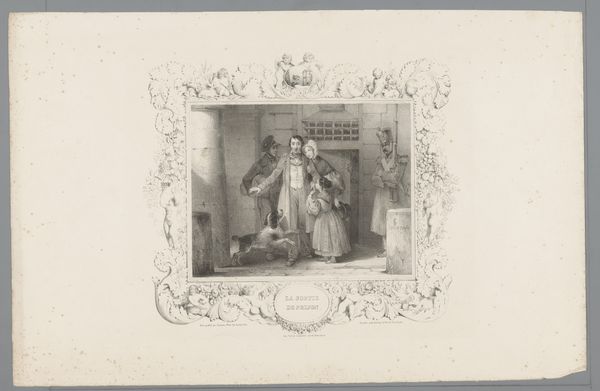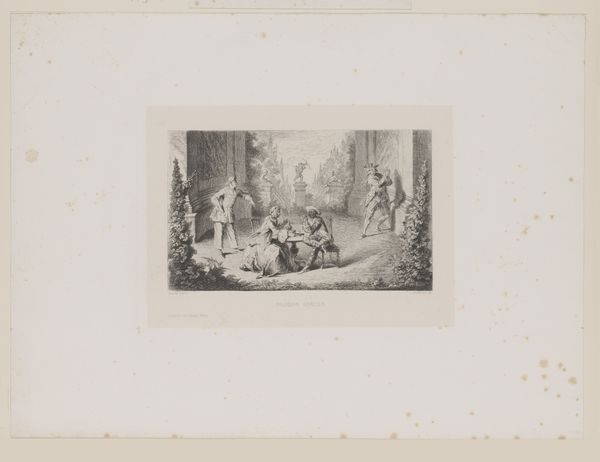
drawing, print, etching, paper, ink, engraving
#
drawing
#
narrative-art
# print
#
etching
#
landscape
#
figuration
#
paper
#
ink
#
romanticism
#
genre-painting
#
engraving
Dimensions: height 316 mm, width 487 mm
Copyright: Rijks Museum: Open Domain
Curator: Jules David created this etching with engraving and stylus on paper in 1836. It is called "Jongen beult een hond en een eend af". It translates from Dutch to "Boy torments a dog and a duck". Editor: Well, that's... cheerful. My immediate reaction is discomfort, obviously. There’s something deeply unsettling about the child’s actions framed by the almost ludicrously ornamental border. Curator: Indeed. This image fits within a long tradition of genre painting, aiming to depict everyday life. But what is interesting here is the contrast between the violence perpetrated by the boy and the rather idealized, Romantic landscape style. We must question the intention. Is David highlighting childhood cruelty, or is something else at play? Editor: I see what you mean. The formal garden setting, complete with that rather nonchalant figure entering through the gate in the background, almost normalizes the scene. Yet the body language of the dog and duck tell a very different story; their bodies convey real distress. To me, this unsettling juxtaposition emphasizes the banality of evil. Like the abuse occurs at leisure. Curator: Precisely! It's possible that David aimed to critique societal attitudes, revealing how cruelty, particularly towards animals and those less powerful, could be easily overlooked within even the most refined settings. This kind of commentary resonated during the Romantic period, with its focus on feeling and individual experience within a world undergoing rapid industrialization and change. Editor: Yes, there’s also the inherent power dynamic being portrayed here, the way the dog and duck have no recourse against this privileged-looking kid. I can’t help but wonder what we, the viewers, are supposed to take away from this scene. Pity? Disgust? Resignation? It’s more than a bit disturbing! Curator: I think this image encourages a necessary engagement with difficult subjects. It acts as a mirror to society’s undercurrents. It questions the very framework in which some flourish while others are subjugated, and it's powerful for its complexity. Editor: Well put! For me, it underscores the potential for cruelty, even in pretty spaces. Now I’m definitely leaving here contemplating childhood and our attitude to animals in a world of ornamental, artificial comfort.
Comments
No comments
Be the first to comment and join the conversation on the ultimate creative platform.
